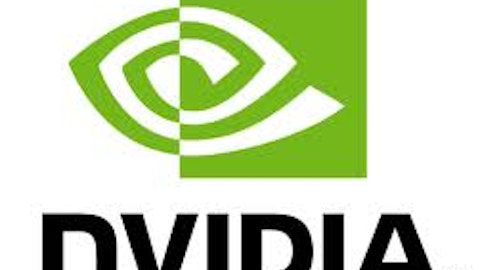A SWOT Analysis gives a much deeper glimpse of a business in terms of its strengths and weaknesses, which are mostly internal, as well as its opportunities and threats, which are largely external. Amazon.com, Inc. (NASDAQ:AMZN) is making a number of long-term investments to expand its moat across the board, and here’s a deeper breakdown of the company’s business model which points to a stellar durable competitive advantage.
Strengths
Brand and customer focus: Amazon.com, Inc. (NASDAQ:AMZN) is the de facto leader and a favorite among customers. The company’s rock solid focus on meeting customer expectations has made it one of the most admired and favorite brands in the world. Amazon took the number 1 spot for customer satisfaction for 8 consecutive years, according to ForeSee. And this gives the company a gigantic competitive advantage over rival firms with more than 215 million customer accounts.

Low cost provider: Amazon.com, Inc. (NASDAQ:AMZN) has always labeled itself as the low cost provider in the e-Commerce space. Amazon is able to provide such low prices to consumers relative to brick and mortar retailers because of its low cost operations and increasingly efficient network of fulfillment centers.
Third party merchants: Owing to its massive ecosystem, Amazon.com, Inc. (NASDAQ:AMZN) has a huge number of merchants and sellers who sell their wares on its platform. Amazon has more than 2 million seller accounts that make up roughly 40% of the total unit sales. And Amazon provides fulfillment services (FBA) to a number of these merchants as well for a fee. The company doesn’t disclose its gross margins from merchant units, but is widely estimated to be in the 80% range, which is substantially higher compared to its own retail operations.
Hardware and digital ecosystem: Kindle devices running on Google Inc (NASDAQ:GOOG)’s Android OS have been a key part of Amazon.com, Inc. (NASDAQ:AMZN)’s razor blade business model. As a result, higher unit sales of Kindle products have led to Amazon becoming a multi-billion dollar seller of e-Books. And the company continues to ramp up its ecosystem by adding more digital products and media content. And its App Store has expanded its footprint to roughly 200 countries across the globe.
Weaknesses
Low margin businesses: The foundation of Amazon.com, Inc. (NASDAQ:AMZN)’s business is centered on low-cost, which has led to lofty growth in top-line sales but translated into very low earnings. The company has always been focused on gaining incremental market share, and sacrificed growth in EPS. While low single-digit margins are characteristic of the retail industry, Amazon’s profits have been lower than many retailers as well. However, the company’s surging revenues have led to investors valuing the company consistently based on Price/Sales and EV/Sales multiples. Amazon’s peer firms including eBay Inc (NASDAQ:EBAY) and Google Inc (NASDAQ:GOOG) have a significantly better margin profile. Amazon’s TTM operating margin stands at 0.95%, whereas, eBay’s margin is 20.8% and Google’s operating margin is roughly 24%. However, margin differences are arising because eBay is not a retailer but an online marketplace, and Google earns more than 85% of its revenues from online advertising.
International operations and F/X headwinds: From a geographical standpoint, Amazon.com, Inc. (NASDAQ:AMZN)’s growth and Consolidated Operating Income from the U.S. is much higher compared to its International operations. In International waters, the company continues to face a number of headwinds due to negative impacts from F/X movements. Amazon’s revenues from the International segment grew 13% Y/Y to $6.2 billion, and operating income was just break-even. And macro-economic weakness in some countries in Europe hasn’t aided the company’s fortunes either.
Taking on competition: Amazon.com, Inc. (NASDAQ:AMZN) is constantly entering newer business sectors and competing with very formidable competitors. And as a result, Amazon has to sustain losses initially to bring that business to scale, before it can achieve profitability. Amazon might be best served to focus on its core competencies, and reduce its bets on non-core business lines.
Opportunities
Cloud computing: AWS is a leader in the cloud infrastructure services space. And Amazon can gain incremental market share in the growing cloud business from small and large businesses alike by offering back-end computing capabilities at reasonable pay-as-you-go rates. AWS got compliance clearance from the U.S. govt. which identifies the capabilities of AWS to run highly secretive and sensitive government applications and data protections. This clearance will lead to more business from various U.S. govt. agencies in the future. AWS has been ramping up its security and identity management capabilities for Amazon Elastic Compute Cloud (EC2), while simultaneously slashing prices for some cloud computing services by 27% to 80%.
Consumer staples and groceries: Amazon.com, Inc. (NASDAQ:AMZN) Fresh can see a broader roll-out leading to incremental revenues from the grocery by mail space. Amazon already owns and operates Soap.com which is already engaged in delivery of many grocery items in select locations. As a result, Amazon has a big addressable market in the form of launching consumable products in a number of territories.
Amazon Prime: Amazon is investing heavily in Prime to add more consumer selection items from Third Party sellers, and also licensing more video shows for Prime Subscribers. The company’s content base surpassed 41,000 titles, including a number of exclusive and producing original content as well. More subscription revenues from Prime customers will enable Amazon to not only grow its business, but also reign in its shipping costs.
Online advertising: Amazon.com, Inc. (NASDAQ:AMZN) has the opportunity to utilize its consumer spending data for the placement of online display ads. The company can easily monetize its huge treasure trove of consumer spending data, which more advertisers can use to target and retarget consumers on various sites.
Geographical expansion: Amazon operates its core retail business in roughly 10 countries worldwide. And going forward, the company has a lot of opportunity to grow and build its presence through retail and/or third party business in fast growing countries like China, Brazil and India.
Threats
Competition among existing players: Amazon.com, Inc. (NASDAQ:AMZN) has always operated in an intensely competitive environment. The company’s leading competitors–online and offline are trying to keep up with the low prices of Amazon. Wal-Mart Stores, Inc. (NYSE:WMT) has increased its e-Commerce presence substantially in the last few quarters, and Best Buy Co., Inc. (NYSE:BBY) recently unveiled a Price Match Guarantee that will provide consumers the lowest available price at retailers and e-tailers. Also, eBay Inc (NASDAQ:EBAY) competes with Amazon for the marketplaces business in which eBay offers a distinct value proposition to merchants. Ebay doesn’t compete with third party sellers with its own goods, but Amazon competes with seller listings with its own wares. The take-rate, which is the amount of fees charged for selling goods on its platform, is higher at Amazon with an estimated take-rate of roughly 12%, compared to eBay’s take-rate of roughly 8.2% in the marketplaces business.
Entry of newer firms: Google Inc (NASDAQ:GOOG) has been listing products on its platform for a long-time, but has built out a wider offering with its search results called Google Shopping. And it’s placing ads on these product listings by merchants, which takes away advertising dollars and consumer shopping dollars from Amazon.com, Inc. (NASDAQ:AMZN). In addition, smaller competitors like Groupon Inc (NASDAQ:GRPN) are getting solid traction in their own e-tailing efforts with Groupon Goods.
Bottom Line
Amazon.com, Inc. (NASDAQ:AMZN) has a few downsides, but the company’s relentless focus on the customer has built a strong moat around its business. Amazon doesn’t make much in profits, but the durable competitive advantages of its business lines are enormous and growing rapidly. Amazon has a very favorable image in the minds of millions of consumers, which paints a very pretty picture for the company’s fortunes in the long term.
Ishfaque Faruk has no position in any stocks mentioned. The Motley Fool recommends Amazon.com, eBay, and Google. The Motley Fool owns shares of Amazon.com, eBay, and Google.
The article Amazon: A SWOT Analysis originally appeared on Fool.com and is written by Ishfaque Faruk





